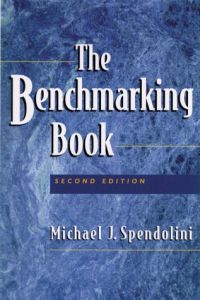Rejoignez getAbstract pour lire le résumé !

Rejoignez getAbstract pour lire le résumé !
Michael J. Spendolini
The Benchmarking Book
AMACOM, 1992
Aperçu
When measured against the competition, this benchmarking book is tops.
Recommendation
Michael J. Spendolini forgoes the usual generalities of management theory in favor of a how-to practicality. The first edition of his book helped to establish the concept of benchmarking in the mainstream of organizational practice. For those of you who don’t know, benchmarking is a continuous-improvement strategy that seeks to improve products, services or operations by comparing them with the best practices of industry competitors and other companies nationally and worldwide. Spendolini offers a five-step model that can be applied by any company. He also provides a helpful, step-by-step guide to applying the process, though he does get a little repetitive as he describes the model and details each step. But getAbstract nevertheless recommends this book to managers and executives as perhaps the best benchmarking primer on the shelf.
Summary
About the Author
Michael J. Spendolini is founder and principal of MJS Associates, an organizational development and training consulting firm. He held a number of managerial positions at Xerox Corp. and is a recognized expert on TQM and benchmarking.

















Comment on this summary